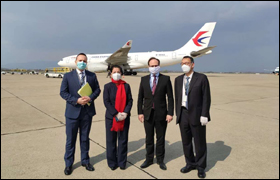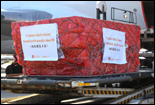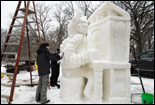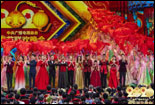Pobjeda u bitki za Tai'erzhuang, za koju mnogi povjesničari tvrde da je dio bitke za Xuzhou.

Foto: Arhiva
The battle of Tai'erzhuang is the best known part of the Battle of Xuzhou. Located on the northern bank of the Grand Canal 30 kilometers northeast of Xuzhou, Tai'erzhuang was positioned on the canal and was the gateway to Xuzhou. With Tai'erzhuang standing in the way, it would be difficult for the Japanese Army to take Xuzhou. Zhou Enlai sent Zhang Aiping as a representative of the Eighth Route Army to meet with Li Tsung-jen and suggest that a major battle be launched at Tai'erzhuang to deal a heavy blow to the Japanese Army. Li Tsung-jen agreed to the idea.
On March 20, 1938, the Japanese Seya Detachment attempted a sudden advance on Tai'erzhuang in order to take Xuzhou in one swift attack, disregarding the fact that the Japanese 5th Division and Nagase Detachment on its flanks were hindered from moving forward with it. With the aim of protecting Xuzhou, Li Tsung-jen ordered three divisions of the 2nd Group Army to defend Tai'erzhuang. On March 24, with air support, the Seya Detachment embarked on three days of intensive attacks against Tai'erzhuang. By March 27, over half of the defending troops had been killed or injured. Chi Fengcheng, commander of the 31st Division stationed in the town, led his troops into the streets to fight the enemy in close combat. The 2nd Group Army engaged in repeated encounters with the Japanese, with the line of conflict seesawing back and forth and large casualties sustained by the Japanese. With the Japanese Army unable to make its way forward, the battle developed into a stalemate.
In light of these developments, on April 2, Li Tsung-jen made the order to surround Tai'erzhuang and eliminate the invading Japanese force. The 20th Army Group was to come from the right flank, attacking the Japanese troops to the left of the town, the 2nd Group Army was to come from the left flank to eliminate the enemy troops in Tai'erzhuang, and the 3rd Group Army was to position itself at Zaozhuang and north of Lincheng to cut off the enemy's route of retreat. On April 3, the Chinese troops launched the counter-offensive from all sides. After four days of fierce fighting, most of the Seya Detachment and a part of the Sakamoto Detachment of the Japanese Army had been eliminated, with the remaining troops retreating to Yi County and Zaozhuang on April 7.
The Battle of Tai'erzhuang was a major victory for the Chinese army. In this fierce battle, which lasted over two weeks, there were 46,000 Chinese troops involved, and 7,500 Chinese soldiers killed, wounded, or missing in action. Over 10,000 Japanese troops were killed and a large number of weapons and equipment were captured.
As news of the victory spread, the country was overcome with a great sense of relief, and messages of congratulations poured in from people of all different backgrounds from across the country, from overseas Chinese, and from international friends. The victory at Tai'erzhuang not only greatly boosted the confidence of the Chinese people that they could win the War of Resistance and had a major impact in China and overseas, it also shocked and worried the Japanese aggressors. The battle fully demonstrated the commitment of the Chinese people to protect their homeland, with both soldiers and civilians fighting to the death nationwide.
· Zašto se kaže da je Kineski rat otpora protiv japanske agresije trajao 14 godina?
· Zašto je rat otpora nacionalna prekretnica od pada na novi ciklus?
· Zašto je KPK bila uporište kineskog ujedinjenog otpora?
· Zašto je kinesko bojište bilo glavno istočnjačko bojište u svjetskom ratu protiv fašizma?
· Koji je incident obilježio početak rata protiv otpora?
· Kako je osnovana marionetska država Mandžukuo?
· Što je obilježilo početak kineskog nacionalnog otpora?
· Kako je KPK upravljala ratom otpora?
· Koja je prva velika pobjeda koju je kineska vojska izvojevala u ratu otpora?
· Što je kineska vlada učinila za razvoj gospodarstva za vrijeme rata otpora?
· Što se događalo s kineskom diplomacijom nakon početka narodnog rata otpora?
· Kako su Kinezi u domovini sudjelovali i podržavali rat otpora?
· Kako su Kinezi izvan domovine pomagali u kineskom ratu otpora?
· Kako je ostatak svijeta podržao kineski rat otpora?
· Koje su nove taktike razvijene u kineskom gerilskom ratovanju protiv japanske agresije?
· Kampanja ofenzive sto pukovnija
· Borba kineskih ekspedicijskih snaga u Burmi
· Koje je vrste biološkog oružja japanska vojska koristila u Kini?
· Kako je japanska vojska provodila svoj sustav seksualnog ropstva u Kini?
· Kako je Kina sudjelovanja u osnivanju Ujedinjenih naroda?
· KPK je pokrenula prvu stratešku protuofenzivu na kineskom bojištu
· Proslava japanske predaje i prihvaćanja u Kini
· Narodni tajvanski otpor protiv Japanaca i oporavak Tajvana
· Kako se sudilo japanskim ratnim zločinima?




















